|
|
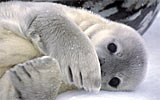
|
||
 |
|
|||||
| Antarctica Picture | Antarctica Cruise | Facts | History | Boots | Store | Clothes | Whales | Books | Video | Schools | Forum | Site Map | FIDS / OAE's |
|
|
Journal of Monty Compton Operation Deep Freeze 1971-72 USCG Staten Island page 1 - Letter | page 2 - Towards Antarctica - This Page page 3 - In Antarctica | page 4 - Antarctica to Seattle page 5 - Personnel List |
| OAEs: Register and find other OAE's | South Pole pictures | McMurdo Pictures | Blogs | Memories of Antarctica | Antarctic Slang |
| US: Deep Freeze | High Jump | McMurdo 60's 70's 80's 90's 2000's | NSFA | Palmer | Seabees, Ellsworth, Byrd, Hallet | Ships | Siple | South Pole VXE-6 60's 70's 80's 90's | William's Field |
Books Deep Freeze: The story of modern pioneers of science in Antarctica Quest for Antarctica: A Journey to "Little America" in 1964 |
| Non US - ANARE | Scott | UK | Corbeta | Sanae | Non-national |
| As a young man Monty Compton served aboard
the USCGC Staten Island from 1971-1973 as a
Marine Science Technician Third and Second
Class. This is the story of his journey during
an annual relief of Antarctic bases as part of
Operation Deep Freeze in the 1971-72 Austral
summer. This Page - page 2 - Towards Antarctica
OPERATION DEEP FREEZE 1972 Monday – October 18, 1971 - After morning quarters on the flight deck we made preparations for getting underway. I was introduced to the other two members of the Marine Science group, MST1 Tom Thompson and MST2 Hal Burton. The Chief and MST1 would be the primary in the twice-daily upper air observations, while Hal and I would stand 12 hour watch (where every 3 hours we would take the mandatory weather observation, code them into the international synoptic code and have the radiomen send out the message). This task took approximately 20 minutes. My station billet for getting underway was assigned to the bridge. The MST was part of the navigation team. We would take gyro bearings from the two bridge wing alidades and pass the readings to the plotting team inside the bridge. We would do this every three minutes until the vessel was well underway. We consisted of 1 of 3 groups determining ships position – The quartermasters and the CIC radarmen were conducting their own plots. The CIC radarmen would also provide the wheelhouse with CPA’s and other traffic interaction in and around the ship during our transit. There was no Seattle Vessel Traffic scheme in the 1970s that currently monitors and advise ALL vessel traffic in the Puget Sound Area. Later that day as we made our way out of Puget Sound, I was introduced to the rest of the Operations Department personnel. This included the quartermasters, ET’s / TTs, radiomen and the CIC group. We were underway to Antarctica. Captain Stanley Putzke was our "old man" (Commanding Officer). I was informed that this was his last voyage before he retired and he was going to take advantage of liberty ports coming and going to Antarctica. My recollection is that we were underway approximately 10 days and then would spend 5 days in a liberty port. On our way to Antarctica those liberty ports were, Acapulco, Mexico – Callao, Peru and Valpariso, Chile. The Aviation crew was a TAD group (Temporary Assigned Duty) and not permanently assigned to the vessel. Before the AV group deployed there were an estimate100 personnel aboard (I was told 99). The AV would make ships compliment up to 128 personnel. Most of the AV group arrived to the vessel the weekend before we left. As we departed Puget Sound the 2 – HH52 helicopters with the pilots and remaining AV crew flew to us from the Whidbey Island Naval Station. The helos were stowed aboard at the aft helo deck above the main deck. There was a 2-stage telescoping hanger that would retract forward into a 3rd section as the helos arrived and deployed maximizing the size of the flight deck. When stowed the helo props were folded back upon themselves and the hanger retracted aft back into place. It covered both helos when the hangar door was lowered keeping them from the elements during passage. The accommodations were simple and conformed to military standards. The Captain had his own cabin and a steward to take care of his personal meals and cabin. The Officers had their individual staterooms and a ward room with several stewards to serve them. The Chiefs’ had their own individual rooms and a Chief mess.. no stewards. The First Class (E-6) had their own community berthing area and a separate lounge. The rest of the crew had no lounge except for the general mess deck. Berthing areas was split up into 3 groups 1) Operations/Engineering/Supply Department, 2) Deck Department and 3) Aviation Department. The largest being the Operations/Engineering/Supply with well over 50 individuals. Bunks consisted of single 1" tubing shaped rectangle frame. On that frame was laced a piece of canvas that would hold a 1-inch bed mattress. A single pillow, simple linen mattress cover with one wool blanks completed your "rack". The racks hung from two vertical pipes with J- hooks on either side. They would stack 4-racks high on either side of the poles allowing just a few inches from your nose to the rack above. One side would be slightly offset so at least when you turned over you were not staring someone in the face. Our only storage was a 2-1/2 foot cubed locker for all of your stuff. The remainder of your belongings remained in your seabag that they locked up and allowed access to once a week. There were no emails, internet or other such technology during the 1970s. Communication was by mail and landlines (if you could afford the charges) from most liberty ports. Occasionally, (about once a month) the Chief radioman would have contact thru a shortwave operator that had landline capabilities. You would put your name on a list and IF called have only a five-minute call limit was allowed. (be sure to say "over" when completing a segment…. over!). I was able to use this once in a six month period. Movies were shown from a projector once or twice a week in the general mess deck (dining room). They were shown from a projector at one end of the dining room and the image projected on a screen hanging from the overhead in the middle of the mess deck. The screen was semi-opaque so that it could be seen from both sides. It was a reverse image of course... but this allowed everyone a good view when the mess deck was packed.
SEATTLE / ACAPULCO Our passage From Seattle to Acapulco, Mexico was uneventful. The weather became warmer and we settled into our routine watch schedule, with drills from time to time. My watch was from 6 PM to 6 AM. I simply had to spend 20 minutes every three hours to collect, code and send a message to the radio room every 3 hours. When more than 200 miles off shore, we would launch a weather balloon twice a day. It would take about 30 minutes to prepare and launch it. The Chief and 1st class would then monitor the signal for the next hour and a half, work up the international code and send the data in via the radiomen. My 12 hour watches consisted of maybe 3 hours of actual work. So I became easily bored. The CIC (Combat-Information-Command) consisted of an Ensign and all of the radarmen. It was located in a very dark room just behind the bridge and ½ deck down. There were no portholes. There were several radar repeaters that were manned 24/7 and a huge plotting board like you see on TV. The CIC would track targets and calculate the course, speed, and their CPA’s (closest point of approach) (time and relative position) they would pass that information up to the Officer of the deck on the bridge. At times they were very busy, and at other times very bored. They also were the main communications (air-traffic-controllers)with the helos when they were deployed. During my watch I would gravitate to CIC. This is where I spent most of my time. I learned a lot and became good friends with most of the radarmen. I was closest with Tom Beckham and Jerry Fields. Now mind you.. for some reason all the radarmen had nicknames. Their 1st Class – Larry gave them all nicknames. Most of them were linked to their personality. Goofy… he was just that… Goofy, as with the same for Drifty. DR?.. (as in dead reckoning) - a navigation term used in CIC. DR- that was his first and middle initial. Strawberry – last name Fields – a Beatle song Strawberry Fields. And then there was Tom Beckham - Corky. Simple enough, he had the unique ability in clearing out his area in berthing (and vacating CIC of personnel) from time to time with his willing ability of producing a significant gaseous pungent cloud of the digestive nature – and then laugh that laugh he had. That is my friend Corky! Nobody called him Tom or Petty Officer Beckham… just Corky – even the Captain. I did not have a nickname… I was not officially part of CIC. ACAPULCO We were anchored about a mile off shore of the resorts. While in port we would be placed into one of 3-duty sections. This meant that every three days you would have to stay aboard while the rest of the crew had liberty. E-6 and below had to wear their dress blue (or dress white) uniforms. E-7 and above were allowed to wear civilian clothes. Prior to leaving Seattle I bought a nice 35mm camera. I did not start using it until we reach Valpariso Chile. While in a liberty port we would pool our meager resources. In Acapulco about a dozen of us got a room together on the 2nd-floor of a nice hotel on the beach. On the balcony, you could look over the grounds and see a nice manicured lawn with live flamingos and a community pool. The pool had a "hut" at one end that sported a bar that you could swim up to and had under water seats. We could look over the tall hedge next to the hotel - the 3rd world was very evident. Families lived in cardboard shanty and mothers would wash their babies in mud puddles. There was on old man that was walking the streets with a donkey. The donkey had baskets with "junk" in the baskets. He would approach a garbage can and kick it over and rustle thru to see if there was something he wanted. One of the guys asked him why he did not pick the garbage back up. Simple enough... he stated that way when he came back thru – if it was standing up he had not gone thru it yet. The city sprawled from the sandy beaches to the hills in the distance. It was at night when you truly could see the 3rd world entity to the city. The lower beach area was well lit up however the homes and shanties on the hillsides were dark due to the lack of electricity. We rented a vehicle. If you have seen the Elvis Presley "Fun in Acapulco" movie made in the 1960s, the only rental cars were "Pepto-Bismol" pink open-air jeeps. As we drove thru town we would come to stop signs and lights. We would then be inundated with young kids selling all sorts of crafts and jewelry along with "peectures-of-my-seeester" "she’s a virgin" ! We made our way up and slightly out of town at a famous restaurant that overlooks the Pacific from a bluff. Actually, the restaurant is situated along the bluff in tiers down the top edge of the bluff. While having "lunch" you can look up and over at the other bluff and watch "cliff" divers plunge from the 100 foot cliff into the grotto below. The diver then would work their way out of the water on the restaurant side. He would walk thru all the tier of diners to the top entrance to the restaurant. They would stand there dripping wet; waiting for tips before they would head off and back to the top to jump again. There were about half a dozen divers that day. As we left the restaurant we notice that our jeep was "stolen". There were others around but not ours... it was gone. We took a cab back to rental place and informed them of this injustice! They laughed at us and said that "one-key-fits-all". All we had to do was jump into the nearest jeep (remember they were open-air) and take off with it. It was common practice. October 29 in Acapulco was my 22nd birthday. The group of us settled in at the pool at the hotel and started a margarita party. Every so often one would walk down to the deep in the pool and dive off the board – swim back to the bar. Everyone except "George". George is actually Leon Washington (hence the nickname George) – an Electronic Technician. He was a "pretty" black man and very friendly and funny. He stayed in the shallow end at the bar stools all afternoon and helped celebrate my birthday with margaritas and the other guys. As evening approached – George got out of the pool and walked down to the deep end. When he got on the board to dive in, someone inquired, "I thought George could not swim?" George did not know how to swim! We all knew that. And when he came off the board he sank to the bottom like a rock. We all scrambled as fast as we could and pulled a sputtering George from the pool. When we asked what in the world he was doing, he simply stated that all us white guys look like we were having so much fun diving off the board all afternoon that he would give it a try! I love margaritas! ACAPULCO / CALLAO, PERU As we departed Acapulco we headed to Callao Peru. There was no air-conditioning aboard the vessel and many of us would pull our mattress from out bunks and sleep out on the decks under the stars. As we approached the equator at night we would stand above on the flying bridge above the wheelhouse watching the crystal clear stars above – We observed a phenomenon night after night as the vessel moved thru the ocean. The weather and seas was particularly nice.. a slight swell, and during the evening, as you looked out over the ocean you would see "clouds" underwater as far as the eye could see. There were schools of fish, swimming and disturbing phytoplankton that would illuminesse creating the illusion of cloud under water. As we approached these "clouds" you would not be able to see the individual fish, but you would see the zig-zag pattern of the disturbed plankton light up as their tails interacted with the plankton. The cloud would then disperse from the ship’s passing. This went on all night long and night after night. Many of the fish were "flying fish". In the morning light would find quite a few of them stranded on the main deck. Those sleeping on deck would occasionally have one of the fish join them sometime during the night. First thing in the morning, the Stewards, mostly Filipinos, would be the first up and gather all the fish on deck. They would then make a fresh fish soup for themselves using all the body parts in which most of the other crew did not dare try. This transit would mean the crossing of the Equator. The ship, with seasoned sailors aboard will be aboard with unseasoned sailors. This meant only one thing! The Domain of the Imperial Golden Dragon! Those that have passed before are nicknamed (Trusty/Honorable) Shellbacks, often referred to as Sons of Neptune; those who have not are nicknamed (Slimy) Pollywogs or Griffins. The Domain of King Neptune had been disturbed upon our crossing. At that time and moment in the middle of the night of the crossing, all of us Pollywogs were expecting the Equator-crossing ceremonies, featuring King Neptune and his court. King Neptune came upon the 21MC ship wide PA system and had all Pollywogs gathered up by the Sons of Neptune. We were ushered into a lower cargo hold. Thru the PA system King Neptune informed us that the violation of his domain was duly noted and written in the books of the seas and that horrible things would be done until the Ceremony of Crossing was vindicated. All became quite, the lights came on and Sons of Neptune had disappeared. We all made our way back topside and back to our berths. No ceremony was evident that night or the following day. CALLAO, PERU Callao, Peru was uneventful for me and many of my shipmates. We had spent most of our disposable income in Acapulco, so many of us did not venture into the city. Lima – the capital of Peru was the adjacent or twin city to Callao. I believe Callao was the port city for Peru in which there was a fishing fleet presence. We were tied up at a pier that had a strong military presence. Soldiers with rifles would conduct rounds along the pier every 10 minutes or so. A few vendors would venture down and would be selling mostly alpaca fur/hide products - blankets, coats etc. They were nice but I could not afford them. We had a Telephone Technician aboard named Vladimir Markov. He was true blue American born and raised, but his grandparents were from Russia and he could speak Russian pretty good. A Russian vessel tied up across the pier from us. With the help of Vladimir, many of the guys would trade cigarettes, Playboys and even Levi jeans with the Russian sailors for vodka and other such oddities. Levi jeans had the largest bargaining chip when dealing with the Russians. We exchanged a few movies. The one movie I saw was of two guys that stumbled around making a movie of people in the streets – no plot– kind of like a 3-Stooges movie. I am convinced that the Russians got the better deal in all of the trades. VALPARAISO, CHILE The transit to Valparaiso, Chile was basically uneventful. The weather became cooler and the deck sleepers moved back into the berthing areas the more we advanced south. Valparaiso is a small city and probably Chile’s most important fishing seaport. The capital of Chile, Santiago is located some 70 miles inland. I cannot recall there name of the currency.. the rates and names had changed over the past few liberty ports. Every time someone would buy something, one of the guys would inquire. "How many mother#@*rs did that cost?". Sailor language – who would of thought? Along Valparaiso waterfront streets is a series of "bars" which names are Americanized. The "New Yorker", The "Chicago etc and etc. These bars were on the ground floor of a small hotel. Once again some of the guys would pool their resources and would "buy" the ENTIRE hotel /bar for the 5-days. The interesting thing about each one of these places is they was a Cross, picture of Jesus and a picture of John F. Kennedy hanging over the bar. The main language is Spanish, and the main religion is Catholic. JFK visited Chile during his presidency and the populous of Chile adored him for that. The other interesting thing was that each hotel had a group of "ladies" assigned to that hotel. At least once and often twice a week, they were "carded" by officials to see if their "health" card was current. On the 1st night one sailor matched up with one of the ladies. The following day he attempted to change partners. None of the ladies would go for that. They told him he was a "butterfly" and that his lady from the previous night was his girlfriend for the week. Even the other ladies from the other hotels observed this tradition… he was out of luck! A group of us signed on for a bus - tour to Santiago. Most my pictures of Valparaiso are of this trip. We stopped along the way at a winery and had lunch. We proceeded and visited the US Embassy. They could not drive in the compound so we took pictures of it from outside the fence. There is one picture of Chile’s "presidential" palace. The picture I took is almost identical angle to the one that was taken a year later and on the front pages of the newspaper when the palace was all shot up. A military coup ensued when the president tried to make the government communist. The people loved democracy and they did not want that to change. We continued to a resort at one of the mountain top. Pictures of ET3 Leon Washington and MST2 Hal Burton are at the base of one of the religious statues at the top. There was a large community swimming pool built around this huge rock outcrop. The buses took us up this mountain and we were to make our way back down to meet the busses on a tram on rails back down the mountain. As mentioned before, Captain Stan Putzke was on his last cruise before he retired. The day before we left, a van drove up to the gangway and out popped Captain Putzke. He then had the crew help him unload dozens and dozens cases of wine. Since wine was rather inexpensive in Chile, we were thinking that he would be bringing them back to the States as to replenish any wine cellar he may have as a retirement gift for himself. Next - page 3 - In Antarctica |
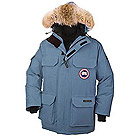 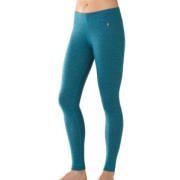 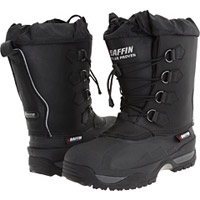 Extreme Cold Weather Clothing |
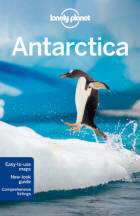
Lonely Planet travel guide Antarctica
![]() USA |
USA |
![]() UK
UK
![]() Free world delivery
Free world delivery
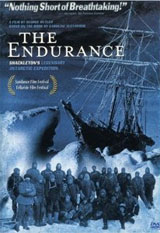
The Endurance
- Shackleton's Legendary Expedition
Dramatization with original footage
![]() DVD |
DVD |
![]() DVD
DVD
Cool Antarctica
Store - Pictures, Shirts, Calendars, Cards etc.

Custom Search
|
Home
| Site Map |
Pictures |
Antarctica
Stock Photos |
Facts |
History | Antarctica
Travel |
Antarctic Clothing |
Video |
Books |
Calendars |